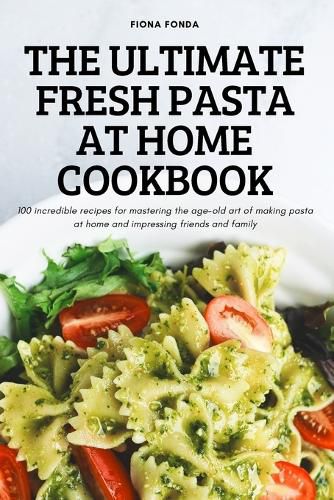Readings Newsletter
Become a Readings Member to make your shopping experience even easier.
Sign in or sign up for free!
You’re not far away from qualifying for FREE standard shipping within Australia
You’ve qualified for FREE standard shipping within Australia
The cart is loading…






This title is printed to order. This book may have been self-published. If so, we cannot guarantee the quality of the content. In the main most books will have gone through the editing process however some may not. We therefore suggest that you be aware of this before ordering this book. If in doubt check either the author or publisher’s details as we are unable to accept any returns unless they are faulty. Please contact us if you have any questions.
The ingredients that are used to make fresh pasta are flour and eggs and optionally salt. This is leads to one of the most puzzling aspects of making homemade pasta. With just two main ingredients you would be forgiven for wondering what all the fuss is about. How can it be difficult? Well, of course it doesn’t have to be difficult.
There are simple recipes that if followed carefully with the right amount of liquid and the right type of flour will produce excellent results every time. It’s just that there are so many ways in which to vary the recipes to produce desirable results that it is worth just considering the variables at play.
Now the classic Italian flour used for every day pasta is known in Italy and in some other countries as ‘00’ flour. The Italians use a scale of 00 to 04 to indicate the colour of the flours. The colour depends on how much bran and germ have been ‘extracted’ from the flour. The bran and germ are what gives flour its colour. The ‘00’ therefore has had all the bran and germ removed and so is a very white and smooth flour which of course produces silky-smooth pasta that is ideal for many uses.
Other than in these special cases, gluten is a key component of the pasta making process. When mixed with the fluid and allowed to stand for a while, Gluten forms bonds at the chemical level. This makes the dough stretchy and springy. It holds the dough together and prevents it from crumbling or falling apart. Gluten is the same ingredient that gives bread dough its properties
$9.00 standard shipping within Australia
FREE standard shipping within Australia for orders over $100.00
Express & International shipping calculated at checkout
This title is printed to order. This book may have been self-published. If so, we cannot guarantee the quality of the content. In the main most books will have gone through the editing process however some may not. We therefore suggest that you be aware of this before ordering this book. If in doubt check either the author or publisher’s details as we are unable to accept any returns unless they are faulty. Please contact us if you have any questions.
The ingredients that are used to make fresh pasta are flour and eggs and optionally salt. This is leads to one of the most puzzling aspects of making homemade pasta. With just two main ingredients you would be forgiven for wondering what all the fuss is about. How can it be difficult? Well, of course it doesn’t have to be difficult.
There are simple recipes that if followed carefully with the right amount of liquid and the right type of flour will produce excellent results every time. It’s just that there are so many ways in which to vary the recipes to produce desirable results that it is worth just considering the variables at play.
Now the classic Italian flour used for every day pasta is known in Italy and in some other countries as ‘00’ flour. The Italians use a scale of 00 to 04 to indicate the colour of the flours. The colour depends on how much bran and germ have been ‘extracted’ from the flour. The bran and germ are what gives flour its colour. The ‘00’ therefore has had all the bran and germ removed and so is a very white and smooth flour which of course produces silky-smooth pasta that is ideal for many uses.
Other than in these special cases, gluten is a key component of the pasta making process. When mixed with the fluid and allowed to stand for a while, Gluten forms bonds at the chemical level. This makes the dough stretchy and springy. It holds the dough together and prevents it from crumbling or falling apart. Gluten is the same ingredient that gives bread dough its properties